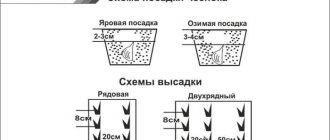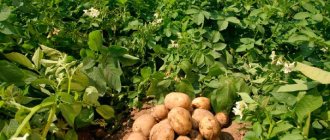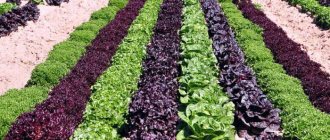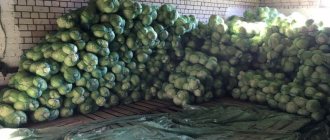[ads-pc-1]
The yield of walnuts (with proper planting and required care), multiplied by the average market price of this valuable product, can generate high income. This is a profitable business idea, the implementation of which does not require significant initial financial investments. Therefore, walnut is rightfully considered one of the most profitable crops.
Business relevance
Growing walnuts is a highly profitable business that does not require significant capital for development. As practice shows, seedlings quickly take root after planting, tolerate temperature fluctuations and are resistant to various pests. The process of caring for trees is simple, and harvesting (and profit) is guaranteed for many decades. Therefore, by organizing the cultivation of walnuts as a business, you can provide not only income for yourself, but also leave a good inheritance for your children and even grandchildren.
But this coin also has a flip side - the business idea will not begin to generate income immediately, but after 8-10 years. The first harvest will be possible after at least 5 years. The time required to accumulate capital and pay back the project belongs to the “long-term money” program, and the project itself is not without risks. This branch of agricultural production is recommended for specialized farms as an additional source of direction.
Business plan for growing walnuts
Naturally, in order to understand whether the business will prosper, it is necessary to draw up a business plan, calculate all the risks and understand how many hectares of land will need to be purchased to plant walnut trees.
Description of the walnut business
- planting a walnut orchard with a total area of 1 hectare;
- pre-sale preparation of goods, that is, cleaning, calibration and packaging.
Competitiveness
- business success is described by the following criteria:
- huge sales market and high demand for goods;
- profit can be obtained over 100-120 years;
- nuts are easily stored and tolerate transportation well.
Product and yield
- packaged shelled or unshelled walnuts for domestic sale;
- Vacuum-packed nut kernels can be sent for sale abroad.
Market and competition
Based on statistics, there is a huge shortage of walnuts on the world market, so marketing them should not be a problem.
Competition in business is practically zero, because few people grow perennial trees.
Risks
A business may not generate income if there are the following reasons:
- conditional risks include global climate change and weather conditions;
- the human factor relies on the possibility of incidents of vandalism or theft;
- activity of walnut pests.
Ripe walnuts ready for harvest
Properties
An important advantage of this business is the constant stable demand, which is due to:
- the value of the nut as a food product;
- possibility of transportation over long distances;
- good product safety;
- deficit in Russia and European countries.
The yield of such gardens can reach 2.5 tons of peeled kernel per hectare. The size of the nut kernel varies within 35 mm. When assessing the yield and quality of products, the following is taken into account:
- taste (no bitterness);
- core size;
- shell wall thickness;
- degree of filling of the nut kernel;
- ease of removing the kernel from the shell.
Let's calculate income and expenses
What kind of profit can we talk about? Do the math: the price of a kilogram of shelled nuts is 4-5 dollars. From each hectare of land, the harvest size can be about two tons, but half of this weight comes from useless shells. Simple calculations allow you to reach a profit figure of up to $10,000 per hectare. Sounds impressive!
Now let's talk about the costs of growing nuts. As already mentioned, their biggest item is the acquisition of land. If you have the status of a farmer and purchase land for agricultural purposes, you can count on a discount from the state. Then there are the costs of purchasing seedlings. Each of them costs about 200 rubles. Having purchased 100 units of trees, you will accordingly pay 20,000 rubles.
Another significant expense item is the installation of a water supply and drainage system, as well as the purchase of fertilizers. You will also have to spend money on protection during the ripening and harvesting season. The collection equipment already mentioned above is a one-time cost.
According to preliminary calculations, the payback for this business occurs within 5 years after the first harvest. In the future, everything earned can be attributed to net profit, and this process will take place over many years and even decades, because walnuts bear fruit for 100 years or more.
Variety selection
Today, breeders have developed many different varieties of walnuts, each of which has its own qualities.
Let's consider varieties that are suitable for organizing a profitable and profitable business:
- "Bulganak" - produces a harvest 5-6 years after planting and proper processing. The crown of the tree is of medium density, the core is quite large - 12-14 grams. 5 years after planting, about 2.5 centners of nut kernels can be collected from one hectare; after 20 years, the yield will increase to 36 centners.
- “Ideal” is a real victory and pride for breeders and a great opportunity to make money for entrepreneurs. The variety has excellent performance - after 20 years, about 120 kilograms of crop can be harvested from one tree, the tree begins to bear fruit in the third year. The kernel occupies 50.1% of the mass of the entire nut, the shell is thin, and the taste is excellent.
- “Burliuk” is an unpretentious variety of nuts that begins to bear fruit in 6-7 years. The crown of the tree is round, the average kernel weight is 12 grams. 7 years after planting, 3 centners of kernels can be collected from one hectare; at 20 years of age, trees yield up to 41 centners.
- “Giant” ripens late, but the yield is quite high, which can reach up to 30 centners per hectare. The tree begins to bear fruit at 5-6 years. The nut received this name due to its large size: on average, the kernel reaches 30 grams, while the thickness of the shell remains only 1 millimeter.
- Arkad - at the age of seven gives a yield of about 2.7 centners per hectare, at the age of 20 the yield increases to 46 centners. The tree will bear fruit in the seventh year. The crown is wide and rounded, the skeletal branches are located at an acute angle. The mass of the core is about 10 grams.
What did you come to?
And back to where we started. Walnut farming is indeed a profitable business, but do you have the desire and patience to care for a garden that will not please you with fruits very soon? In addition, so that the “painted” picture is not so tempting, each of us must understand: in order for the garden to give birth, we need to invest not only money, but also our souls in the trees and land. We also advise you to think about the idea of processing nuts in Ukraine. After all, many would definitely not refuse the famous American nut butter with a Ukrainian price tag. And you?
For more details, see the report by Vitaly Radko:
By the way, here is an example of how the wives of Ukrainian nut growers are already making nut butter for their family on their own:
| Return on investment due to the sale of nut kernels | ||||
| Year of project implementation | Costs, thousand UAH. | Income, thousand UAH. | Profit, thousand UAH. | Total profit, thousand UAH. |
| 1 year | 533,3 | — | — | — |
| 2 year | 95,3 | — | — | — |
| 3 year | 96,8 | — | — | — |
| 4 year | 95,8 | — | — | — |
| 5 year | 96,4 | 120 | 23,6 | 23,6 |
| 6 year | 97,2 | 192 | 94,8 | 118,4 |
| 7 year | 99,1 | 384 | 284,6 | 403,3 |
| 8 year | 101,8 | 576 | 474,2 | 877,5 |
| 9 year | 103,2 | 720 | 616,8 | 1494,3 |
| 10 year | 105,5 | 864 | 758,5 | 2252,8 |
| 11 year | 108,6 | 1008 | 899,4 | 3152,2 |
Growing technology
The tree is thermophilic, but can tolerate frosts down to -25 ºС - -30 ºС, and grows in regions with a temperate climate. Beginning entrepreneurs need to know how to grow walnuts, all the intricacies of fertilizing and caring for trees. Main factors and growing technologies:
- The influence of light. Walnut is a light-loving crop that will grow well and produce a high yield only in good light. But do not try to plant trees densely to increase yield - such attempts have never been successful.
- Humidity. The best option is to grow in regions with low humidity and a constant groundwater level. It is unacceptable to plant trees in acidic soil or in marshy areas.
- The soil. Good results can only be obtained if all agricultural measures are fully implemented.
- Fertilizers. It is recommended to apply potassium-phosphorus fertilizers at the root level. There is no need to loosen the soil many times. Nitrogen fertilizers will increase yields, but can also contribute to the development of bacteriosis, so they should be treated with caution.
- Irrigation. Nuts require high water intake, especially from May to August. In many regions, precipitation levels are insufficient, so it is advisable to water the crop.
Video - Planting walnuts in open ground:
Pros and cons of the variety
The advantages and disadvantages can be easily grouped, based on the description of the Ideal nut variety and reviews from gardeners. Among the advantages are:
- Precociousness. The variety begins to bear fruit very early.
- Compactness of the tree. Ideal compares favorably in size with other nut varieties. Therefore, other crops can be planted next to it at a closer distance than from a regular nut.
- Frost resistance. The variety can withstand temperatures down to -30-35°C without damage.
- Undemanding to soil composition. When planting an Ideal walnut seedling, you do not need to prepare a special soil mixture. The plant grows normally in soil with high acidity.
- Double fruiting. This characteristic makes it possible to harvest even if the flower buds freeze in the spring.
- High annual yield.
The disadvantages of the Ideal nut are:
- The fragility of the variety. This is due to the precociousness of the Ideal nut. Such species live on average 40-50 years; an ordinary walnut grows for 100 years or more.
- Instability to return frosts.
Optimal growing conditions
Walnut of the Ideal variety prefers well-lit areas with normal humidity. The powerful root system penetrates deep into the ground, so areas with close groundwater should be avoided. It is also not recommended to plant a tree near buildings so that the growing nut does not damage them. The variety is characterized by strong spreading branches. Special care from the gardener is needed in the first year after planting the seedling. At this time, the Ideal grows reluctantly. If the tree successfully overwinters, then next year it develops much more actively, and in the fall reaches a height of up to 1.3 m.
Choosing planting methods
Planting nuts can be done in two ways - seedlings or seeds. But in the latter case, it is not always possible to predict what fruits the tree will bear and whether the variety is compatible with the selected region. The only exceptions can be specialized companies that breed and sell nut seedlings.
If nuts are already growing near the selected area for planting trees, you can choose this plant as a seed donor. This will give you confidence in adapting to the climatic conditions and soil conditions of the selected region.
How to plant nuts from seeds: Collect the largest and ripest fruits. An indicator of ripeness is small cracks in the outer shell and simple peeling of the shell. It is recommended to plant in the fall after harvesting.
Dig a hole 1 meter deep, peel the nut from the outer shell (pericarp) and place it in it, covering it with soil and humus. There is much debate about whether the pericarp of a nut should be peeled. It has been proven that when they are cleaned, the tree germinates faster.
It is better to plant seedlings in early spring at 2 years of age. Choose seedlings whose trunk thickness is at least 1 centimeter at a distance of 5 centimeters from the root collar. The height of the sprout is not important. Before planting, the vertical root must be cut off by 2-3 centimeters, and the cut area should be lubricated with clay. The seedling is placed in a dug hole and covered with fertilized soil, excess branches are cut off. growing walnuts
Plant diseases and their treatment
Treatment of plant diseases:
- Marsonia – fungal, anthracose infection of walnut foliage. The surface of the leaves begins to become covered with reddish-brown spots, which grow and destroy the entire area of the leaves; the disease can spread to the fruits. The cause of the disease is excessive rainfall.
Prevention of the disease is to spray the tree crown three times with a mixture of quicklime and copper sulfate, in a 1 to 1 ratio, diluted with water. In the spring, in April, the swelling buds of the walnut tree are sprinkled with Strobi and Vectra. Leaves affected by spots are collected and burned. - Bacteriosis – damage to leaves and fruits, leading to deformation and falling. The reason is frequent rains in the spring, excessive watering and feeding with nitrogen-containing products.
Disease prevention and treatment: triple treatment of the walnut tree with a mixture of marsonia, carried out before the flowering period. Leaves and fruits infected with bacteria are collected and burned. - Root system cancer – stopping the growth and development of the plant. Cracks in the stem and roots become overgrown with lumpy formations, as a result of which the tree cannot receive nutrients and water from the soil and begins to die.
Treatment - the growths are cut off, the cut areas are moistened with liquid caustic soda and washed with water.
A properly planted walnut will begin to ripen and pollinate after several years. The productivity of trees depends on the correct selection of varieties, planting seeds, prevention of nut disease, control over the volume of spring pruning, harvesting of pollinators, and the maturity of the fruit-bearing plant.
Financial plan
Let's consider approximate calculations for planting 100 hectares. 68 seedlings are needed for 1 hectare.
- site preparation (cultivation, plowing) – 40 thousand rubles;
- preparation of planting holes (digging, fertilizing) – 300 thousand rubles;
- purchase of seedlings (6800 pieces, two-year-old, cost of one - 300 rubles) - 2.04 million rubles;
- care (planting, tying to the base, watering) – 500 thousand rubles;
- costs for agrochemicals (maximarin, superphosphate) – 500 thousand rubles;
- wage fund (4 workers for 10 months with a salary of 18,000 rubles) – 720 thousand rubles;
- other costs (tax, transport, etc.) – 100 thousand rubles.
As can be seen from the approximate business plan, in the first year costs of 4.2 million rubles are needed.
The cost of maintaining the garden in future years will be about 1,820,000 rubles. They will be used for plowing, removing weeds, applying agrochemicals, watering and protecting the territory.
Approximate calculation: 4.2 million rubles. + 1.82 million rub. x 4 years = 11.48 million rubles.
Balance for five years – -11.48 million rubles. Video - Industrial cultivation of nuts (automation):
In what organizational and legal form should I open a nut business?
Any business activity aimed at generating income will be illegal without going through the state registration procedure. Growing nuts is an agricultural activity, and the choice of agricultural enterprise directly depends on the amount of land:
- if you own a plot of less than one hectare, you can organize a personal subsidiary plot (LPH);
- if the size of the occupied area is more than 1 hectare, you can form a peasant farm (peasant farm) or become an individual entrepreneur (IP).
Regardless of the form of ownership, you will need to pay income tax on profits. Taking into account the specifics of the field of activity, the amount of payments will be only 6 percent.
- a single agricultural tax for peasant farms;
- simplified taxation scheme for legal entities, including individual entrepreneurs.
Young walnut seedlings
Profitability calculation
How much can you earn? You can count on making a profit only starting from the fifth year. You can collect approximately 640 centners of nuts from 100 hectares of land.
The cost of a peeled nut is 250-600 rubles per kilogram (depending on the condition of the kernel), prices for unshelled nuts vary between 130-150 rubles per kilogram.
If you hire 4 more temporary workers to collect and process nuts (their wages for two months will be 144 thousand rubles) and sell unshelled nuts at 140 rubles per kilogram, the income will be 8.96 million rubles. (64000 kg x 140 rub.).
Approximate net profit - 6,996,000 rubles. (8.96 million rubles – 1.82 million rubles – 144 thousand rubles).
As can be seen from the calculations, in three years you can recoup the start-up costs and reach the break-even point in the 8th year.
At the same time, the yield will increase every year. Already in the tenth year, with proper garden maintenance, up to 80 tons of nuts can be collected from 100 hectares.
To increase business efficiency, you can purchase a nut processing line and sell it already peeled.
Required starting capital: from 11,480,000 rubles. Monthly profit: from 583,000 rubles (6,996,000 million rubles per season, starting from the 5th year) Payback period: from 8 years.
Sales
Today, in Europe and Russia there is a fairly large shortage of walnuts. There is no need to advertise the products; during the season, nut buying points are opened in the markets. You can often meet a person with a sign “I’ll buy nuts.” You can also search for advertisements on the Internet.
Industrial cultivation of nuts can be called “passive income”, and besides, the business is designed for more than one generation.
general information
More than a thousand years ago, this tree arrived in Europe from Central Asia.
It was brought to Russia by Greek merchants, which was the reason why the plant received such a name. Now it is being bred not only in hot countries of the world, but also in Russia, Moldova, Belarus, as well as in Ukraine and the Caucasus. In ancient times, walnuts had several other names : “food of heroes”, “acorn of the gods”, “tree of life”.
From time immemorial, people have respected and loved this powerful plant, because it gave them tasty and very healthy fruits. Other parts of the tree were also actively used, for example, the foliage was used for medicinal purposes. The walnut is not only one of the largest, but also one of the longest-living species among all trees in the Middle Zone. Based on statistical data, we can say with confidence that some specimens lived up to 400–600 years. However, today the likelihood of meeting such a long-liver is extremely low, because walnut wood is highly valued and is actively used for the production of expensive luxury furniture and decorative elements.
According to experienced gardeners, the number of fruits that can be obtained from one tree primarily depends on the age of the plant. Thus, the yield of a young (up to 50 years old) walnut is not comparable to that which has managed to cross the hundred-year mark.
Description and characteristics
This walnut tree is considered tall. If the plant likes the place that is allocated to it on the site, and the gardener follows all the prescribed rules for caring for it, then the walnut can grow up to 18-23 meters in height.
The spreading crown of the tree can reach 15 meters in diameter, and the branches diverge at right angles.
It should be concluded: before planting such a plant in your garden, you should take a responsible approach to choosing a location so that the grown tree does not spoil the appearance of the site, does not touch the buildings with branches and does not block sunlight from other plantings. The walnut tree has a very powerful and branched root system .
During the first three years, the main tap root develops; as it grows, it tends to penetrate into the very depths of the soil and gain a foothold in it. At 4-6 years of life of the tree, lateral roots are formed, they diverge 5-6 meters in different directions from the main one. Such roots are located close to the soil surface, but only 30-50 centimeters deep. This perfect root system helps the adult plant not to suffer from low rainfall and insufficient watering, since the large capture area allows it to independently find water.
If you cut down an adult walnut tree, but do not touch the stump that remains from it, then after a while young shoots will begin to grow from the stump, from which in 1-2 years it will be possible to harvest the first harvest. Take this feature into account if you want to get rid of the tree forever, because in this case it is not enough to simply cut it down, you will have to uproot the stump. There is no need to worry about the roots remaining in the ground - they are not capable of producing new shoots.
Possibility of combining with another type of business
Since the trees are planted sparsely, other crops can be grown between them for a more rational use of the land (this direction is especially important in the first five years, when the seedlings grow). You can grow pumpkin or legumes.
Walnuts are heat-loving and common in the southern regions. Attempts to grow them in the north ended in failure. But residents of the northwestern regions can replace it with Manchurian walnut, which is very similar to walnuts, but is frost-resistant (can withstand cold winters from -30ºС and even short drops down to -45 ºС).
Also, as a combination of directions, you can grow chekalkin nut - this is a shrub up to 4 meters high. It has a curved crown that is covered in white flowers in spring. Experts consider this plant one of the most beautiful shrubs. Then the flower turns into a small box, in each of which by autumn 5-17 hazelnut-like nuts are formed.
Features of agricultural technology
Fertilizers are also an important issue. The soil for walnut trees must be saturated with minerals and salts, and it should be fed regularly. The quality of fertilizers directly affects its fertility and, as a consequence, productivity.
Growing walnuts requires the installation of a drainage system, which usually consists of laying a network of water ditches along the entire length of the site with an approach to each individual tree. Their trunks are surrounded by earthen ridges, each on a separate square with a side of about one and a half meters. Periodically, these areas should be moistened abundantly until completely flooded.
How do you collect nuts? This is seasonal work, and for it you can hire temporary workers whose task will be to collect all of them manually. Or you can purchase a cleaning mechanism for operation, which is similar in principle to a vacuum cleaner on wheels. Such a unit shakes off the trees, from which all the ripe nuts fall, then the fruits are collected from the ground according to the same principle as a conventional vacuum cleaner. Thanks to the hard shell, the nuts do not break or spoil when dropped.
You can sell the crop in the shell, but if the nuts are shelled, the profit will be much higher. For this procedure, you can also resort to hired force, or you can acquire special equipment.
Reviews
Larisa: “Looks very attractive. Even with several trees on the plot, I annually receive a fairly large increase in my salary by selling walnuts to a wholesale base. If you do this seriously, then, obviously, the profit will be significantly higher.”
Oleg: “In this case, you need to focus on the climatic conditions of the region. It’s not possible to get a good harvest in every city, since these trees are not frost-resistant and often disappear.”
Ivan: “For me, it’s much safer and easier to resell goods. After all, if you grow it, you will have to depend on the place, care for the plants, and take risks depending on the weather. And by establishing supply and sales channels, you can quickly get rich in a short period.”
About the size of investments
But we digress from our main topic - growing nuts as a business. So, what could be the figures for income and expenses in this case? Let's try to roughly determine the investment per hectare of planted walnut orchard.
The procedure for plowing the land will cost you approximately 6,000 rubles. Add another 3000 to prepare the holes for planting. We buy seedlings for 200-300 rubles, a total of 100 pieces will cost us 30,000. Let’s add here two and a half thousand for transportation costs for their delivery and subsequent planting.
The cost of care with watering throughout the year will be from 15 to 20 thousand rubles. If a plot of land is leased, the cost for it also needs to be added here.
Do not forget that the garden will require protection. When the seedlings reach fruiting age (in about 5 years), they will no longer need to be constantly protected. Such expenses will only be needed for a couple of months during each year, when the garden bears fruit.











